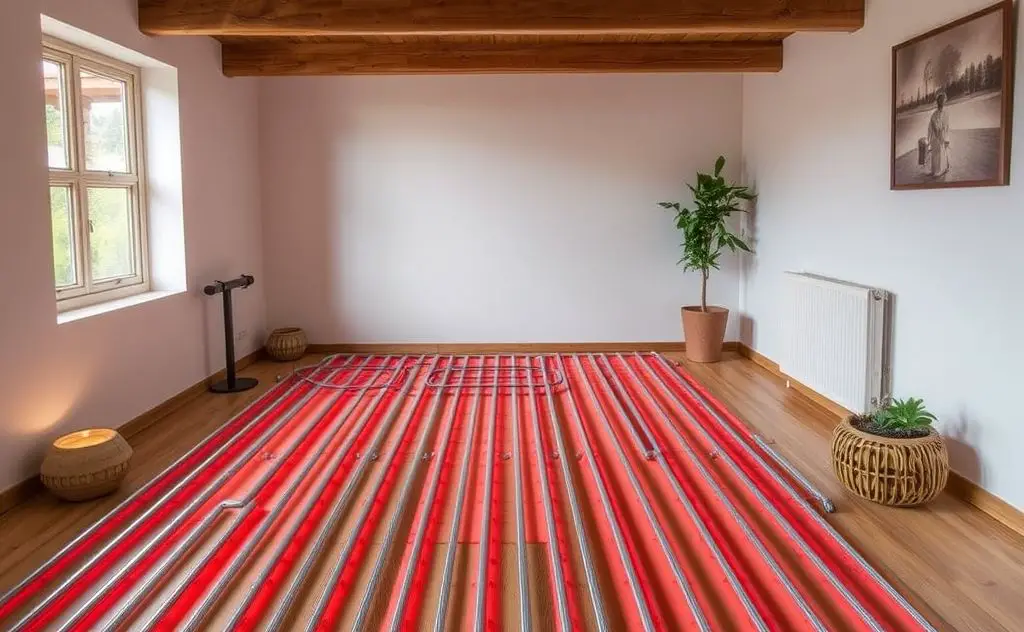Radiant heating offers efficient warmth by directly heating surfaces, reducing energy consumption and improving comfort in homes and buildings.
Radiant heating systems are revolutionizing home comfort by delivering superior warmth while cutting energy costs. Unlike traditional forced-air systems that lose heat through ducts, radiant heating warms surfaces directly for unmatched efficiency and comfort.

How Radiant Heating Works
Radiant systems use infrared waves to heat floors, walls, or ceilings, which then radiate warmth to people and objects in the room. This method mimics the sun’s natural heating process, creating consistent comfort without drafts or cold spots.
The Science Behind Radiant Heat
There are three types of heat transfer:
- Conduction: Direct contact heat transfer (like a hot pan)
- Convection: Air circulation heating (traditional forced-air systems)
- Radiation: Infrared waves heating surfaces directly
Radiant systems excel because they eliminate the 20-30% energy loss typical in duct systems. According to the U.S. Department of Energy, radiant heating can be 25-30% more efficient than forced-air systems.

Types of Radiant Heating Systems
Hydronic Radiant Floor Heating
This system circulates heated water through tubing under floors. It’s ideal for whole-home heating and works exceptionally well with precise thermostat controls for maximum efficiency.
Electric Radiant Heating
Using electric coils or mats, this option is perfect for smaller spaces or room additions. It heats up quickly and pairs well with discreet heating solutions that maintain your home’s aesthetics.
| Feature | Hydronic | Electric |
|---|---|---|
| Installation Cost | Higher | Lower |
| Operating Cost | Lower | Higher |
| Best For | Whole-home heating | Single rooms |
Key Benefits of Radiant Heating
Superior Energy Efficiency
Radiant systems operate at lower temperatures (85-135°F) compared to forced-air systems (130-160°F), reducing energy consumption. The American Society of Heating Engineers notes radiant systems can maintain comfort at thermostat settings 6-8°F lower than forced-air systems.
Improved Air Quality
Without blowing air, radiant heating doesn’t circulate dust, allergens, or mold spores. This makes it ideal for allergy sufferers and families with respiratory concerns.
Silent Operation
No noisy fans or blowers mean peaceful, undisturbed comfort in bedrooms and living spaces.
Design Flexibility
Radiant systems work with most flooring types and free up wall space normally occupied by radiators or vents.
Installation Considerations
Proper installation is crucial for optimal performance:
- Choose the right system type for your space
- Ensure proper insulation beneath heating elements
- Consider zoning for different temperature needs
- Use quality materials for long-term reliability
For existing homes, electric radiant mats installed under flooring offer a practical retrofit solution. New construction benefits most from hydronic systems integrated into the building design.
Maintenance and Longevity
Radiant systems require minimal maintenance:
- Hydronic systems need occasional water treatment
- Electric systems typically require no maintenance
- Both systems have lifespans of 20+ years
Compared to forced-air systems that need regular filter changes and duct cleaning, radiant heating offers hassle-free operation year after year.
